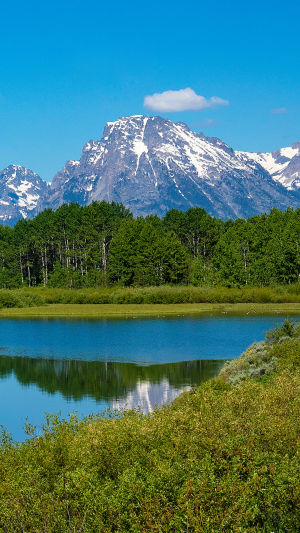Forests are biomes that are dominated by woody plants.
Forests are known as the "lungs of the earth" because of their rich species, complex structure, and diverse functions.
The main functions of forests are.
1. Water conservation
Forest roots and humus can improve soil properties, protect the ground from the direct impact of rain, reduce soil erosion, and play a role in water conservation.
Forests can also purify water, and precipitation through the forest soil infiltration filter.
The water contains toxic substances such as arsenic, mercury, lead and cyanide, chlorine, fluorine, and other compounds, and germs are blocked in the soil.
2. Soil conservation
The root system of the forest can hold the soil, nourish water, maintain soil and water, and absorb and use salt.
Dead branches and leaves can increase organic matter and humus, which can effectively improve the soil structure and enhance soil fertility.
3. Release oxygen
The forest can absorb carbon dioxide and release a large amount of oxygen in its photosynthesis.
One hectare of broad-leaved forest can absorb 1 ton of carbon dioxide and release 0.37 tons of oxygen a day, which is enough tons for about 1000 people to breathe in a day.
4. Purify the atmosphere
Forests can effectively slow down the greenhouse effect, 90% of the carbon in terrestrial ecosystems is naturally stored in forests, and forests can solidify 350 kg of carbon dioxide per 1 m3 of growth.
Each hectare of forest absorbs 0.3 million tons of ozone-depleting nitrogen dioxide per year, which can reduce the depletion of the ozone layer.
5. Temperature regulation
Forests have a luxuriant canopy, which can block solar radiation energy, and the temperature difference between day and night and winter and summer in deep forests is small, which can reduce the harm of frost.
6. Reduce noise pollution
According to calculations, 100 meters of protective forest belts can reduce car noise by 30%, motorcycle noise by 25%, and electric noise by 23%.
7. Effective protection of biodiversity
Forest is the habitat of many kinds of animals, and plants, more than half of the earth's creatures live and reproduce in the forest, which is an important carrier to protect biodiversity resources.
8. Protecting farmland
A perfect farmland protection forest system can prevent wind and sand, contain water, regulate temperature, and effectively improve the agricultural ecological environment.
And it enhances the ability of agricultural production to resist natural disasters such as drought, sand, dry and hot wind, handrail, and frost, and effectively promotes stable and high agricultural production.
9. Forest recreation
Whether in the urban periphery or the far suburbs, forests are natural landscape resources of great value and are important places for people to vis.
10. Energy saving and emission reduction
Forests have a huge carbon sequestration capacity and can absorb sulfur dioxide, nitric oxide, carbon monoxide, and carbon dioxide, slowing down the greenhouse effect, achieving indirect emission reduction, and expanding environmental capacity.
9. Forest recreation.
Whether in the urban periphery or the far suburbs, forests are natural landscape resources of great value and are important places for people to vis
10. Energy saving and emission reduction.
Forests have a huge carbon sequestration capacity and can absorb sulfur dioxide, nitric oxide, carbon monoxide, and carbon dioxide, slowing down the greenhouse effect, achieving indirect emission reduction, and expanding environmental capacity.





